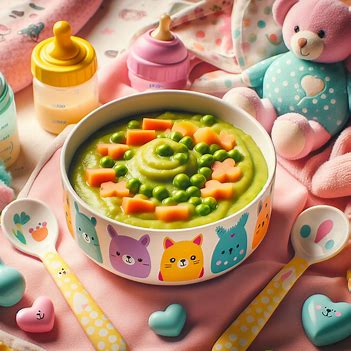
Welcome to our comprehensive guide on breast milk and formula feeding. As a parent, there are numerous decisions to make concerning your little one’s nutrition, and choosing between breast milk and formula is one of the most critical ones.
Benefits of Breast Milk
Breast milk is often referred to as “liquid gold” due to its remarkable benefits for infants. It is uniquely designed to meet all of your baby’s nutritional needs while providing a host of other advantages. Breast milk contains a perfect balance of proteins, fats, carbohydrates, vitamins, and minerals necessary for your baby’s growth and development. It even changes its composition as your baby grows, adapting to their evolving nutritional requirements.
Furthermore, breast milk is filled with antibodies that help protect your baby from infections and diseases. These antibodies are not present in formula milk, making breast milk an invaluable source of immune support. Breastfeeding is also known to reduce the risk of various health conditions, including respiratory infections, ear infections, asthma, allergies, obesity, and certain types of childhood cancers.
Breastfeeding also benefits the mother. It promotes the release of hormones that help the uterus contract after childbirth, reducing the risk of postpartum bleeding. It can also aid in weight loss and lower the risk of developing breast and ovarian cancers. Additionally, the bond formed during breastfeeding provides emotional benefits for both mother and baby.
Benefits of Formula Feeding
While breast milk is highly recommended, there are situations where formula feeding becomes the preferred choice. Formula feeding provides an alternative for mothers who are unable to breastfeed due to medical reasons or personal circumstances. It allows other family members to participate in feeding, giving mothers more flexibility and the ability to share the feeding responsibilities.
Formula milk is designed to mimic the composition of breast milk as closely as possible, providing essential nutrients for your baby’s growth and development. It is available in various types, including cow’s milk-based, soy-based, and hydrolyzed formulas for babies with specific dietary needs or allergies. Formula feeding also provides a convenient option for mothers who find breastfeeding to be challenging or uncomfortable.
Formula feeding allows parents to have better control over their baby’s intake, as they can measure the exact amount of milk consumed. This can help monitor and manage feeding patterns, making it easier to establish routines. Additionally, formula feeding can be more convenient when travelling or when mothers return to work, as it does not require constant breastfeeding or pumping.
Factors to Consider When Choosing Between Breast Milk and Formula
When deciding between breast milk and formula feeding, it’s essential to consider various factors that may influence your decision. These factors include the mother’s health, lifestyle, personal preferences, and the baby’s unique needs. It’s crucial to evaluate your circumstances and weigh the pros and cons of each feeding method.
Breastfeeding requires time, dedication, and support. It is a natural process but may not always come easy for every mother and baby. Mothers should consider their health, including any medical conditions or medications that may affect breastfeeding. Support from partners, family, and healthcare professionals is crucial in establishing a successful breastfeeding routine. The mother’s lifestyle and commitments should also be taken into account, as breastfeeding requires frequent and on-demand feeding sessions.
Formula feeding provides more flexibility and allows others to share the feeding responsibilities. It is a viable option for mothers who are unable to breastfeed or those who prefer a more structured feeding routine. It’s important to consider the cost of formula feeding, as it can be a significant expense over time. Additionally, some babies may have allergies or sensitivities to certain ingredients in formulas, so it’s essential to choose the right type of formula that suits your baby’s needs.
How to Establish a Successful Breastfeeding Routine
Establishing a successful breastfeeding routine requires patience, practice, and support. Here are some tips to help you navigate your breastfeeding journey:
- Start early: Begin breastfeeding as soon as possible after birth to encourage the baby’s natural instinct to latch and feed.
- Seek support: Reach out to lactation consultants, support groups, or healthcare professionals for guidance and assistance.
- Find a comfortable position: Experiment with different breastfeeding positions to find the one that works best for you and your baby.
- Practice proper latch: Ensure your baby is latching correctly to prevent discomfort and ensure efficient milk transfer.
- Feed on demand: Breastfeed your baby whenever they show hunger cues, rather than adhering to strict schedules.
- Take care of yourself: Stay hydrated, eat a balanced diet, and rest as much as possible to support your milk production.
Remember, every breastfeeding journey is unique, and it’s essential to be patient with yourself and your baby. Seek help when needed and trust in your ability to provide nourishment and comfort for your little one.
Tips for Pumping and Storing Breast Milk
Pumping and storing breast milk can be beneficial for mothers who need to be away from their babies or want to build a supply for future use. Here are some tips for successful pumping and storing:
- Invest in a quality breast pump: Choose a breast pump that suits your needs and ensures efficient milk extraction.
- Establish a pumping routine: Find a schedule that works for you and helps maintain your milk supply.
- Follow proper hygiene: Wash your hands before pumping, and clean all pump parts and bottles thoroughly.
- Store milk in appropriate containers: Use sterilized containers specifically designed for breast milk storage.
- Label and date milk: Clearly label each container with the date and time of pumping to ensure safe and organized storage.
- Follow storage guidelines: Refrigerate or freeze breast milk according to the recommended temperature and duration.
By following these tips, you can ensure the safety and quality of your expressed breast milk, allowing your baby to receive the benefits of your milk even when you are not physically present.
Choosing the Right Formula for Your Baby
If formula feeding is the chosen option for your baby, it’s important to select the right formula that suits their nutritional needs. Here are some factors to consider when choosing a formula:
- Consult your healthcare provider: Seek guidance from your paediatrician or healthcare professional to determine the best formula for your baby.
- Consider your baby’s dietary needs: Take into account any allergies, sensitivities, or special dietary requirements your baby may have.
- Choose a reputable brand: Opt for well-established formula brands that have undergone rigorous safety and quality checks.
- Read the label: Check the nutritional content of the formula, including proteins, carbohydrates, fats, vitamins, and minerals.
- Consider the type of formula: Decide between cow’s milk-based, soy-based, or hydrolyzed formulas based on your baby’s specific needs.
It’s essential to remember that every baby is different, and what works for one may not work for another. Be observant of your baby’s reactions to the formula and consult your healthcare provider if you have any concerns.
Combining Breast Milk and Formula Feeding
Some parents choose to combine breast milk and formula feeding to provide the benefits of both methods. This can be a helpful option for mothers who want to supplement their breast milk supply or gradually transition to formula feeding. Here are some tips for combining breast milk and formula:
- Start with breastfeeding: Establish a breastfeeding routine and ensure your baby is effectively latching and feeding.
- Introduce formula gradually: Start by substituting one feeding session with formula and gradually increase the frequency as needed.
- Monitor your baby’s reactions: Observe how your baby responds to the combination feeding and make adjustments accordingly.
- Seek support: Reach out to lactation consultants or healthcare professionals for guidance on combining breast milk and formula.
Combining breast milk and formula feeding allows for flexibility and ensures your baby receives the necessary nutrition while adapting to your specific circumstances and needs.
Common Challenges and Solutions for Breastfeeding and Formula Feeding
Breastfeeding and formula feeding can come with their own set of challenges. It’s important to be aware of these challenges and seek appropriate solutions to ensure a positive feeding experience for both you and your baby. Here are some common challenges and their solutions:
- Low milk supply: If you are struggling with low milk supply, consult a lactation consultant who can guide you on increasing milk production through various techniques.
- Engorgement and sore nipples: Proper latching techniques, warm compresses, and using nipple creams can help alleviate engorgement and soreness.
- Mastitis and blocked ducts: Frequent feeding, warm compresses, and gentle massage can help relieve symptoms of mastitis and unblock ducts.
- Colic and reflux: If your baby experiences colic or reflux, consult your healthcare provider for advice on feeding techniques or specialized formulas.
- Allergies or sensitivities: If your baby shows signs of allergies or sensitivities, consult your paediatrician to determine the cause and appropriate formula or dietary adjustments.
Remember, it’s essential to seek professional help when facing challenges to ensure the well-being of both you and your baby.
Conclusion: Finding the Best Feeding Option for Your Little One
Choosing between breast milk and formula feeding is a significant decision that can impact your little one’s health and well-being. Both methods have their unique benefits and considerations, and it’s crucial to assess your circumstances and needs.
Breast milk offers unparalleled nutritional and immune support, promoting optimal growth and development for your baby. It strengthens the bond between mother and child and provides long-term health benefits for both. However, breastfeeding may not always be feasible for every family due to various reasons, making formula feeding a viable alternative.
Formula feeding provides flexibility, allowing others to participate in feeding and providing a convenient option for mothers with specific circumstances. It ensures that your baby receives the necessary nutrition while accommodating your lifestyle and needs.
Ultimately, the decision between breast milk and formula feeding should be made based on what works best for you and your little one. Seek guidance from healthcare professionals, lactation consultants, and support groups to make an informed choice. Remember, every feeding journey is unique, and with the right support and information, you can provide the best nourishment for your little one, ensuring their health and happiness.














